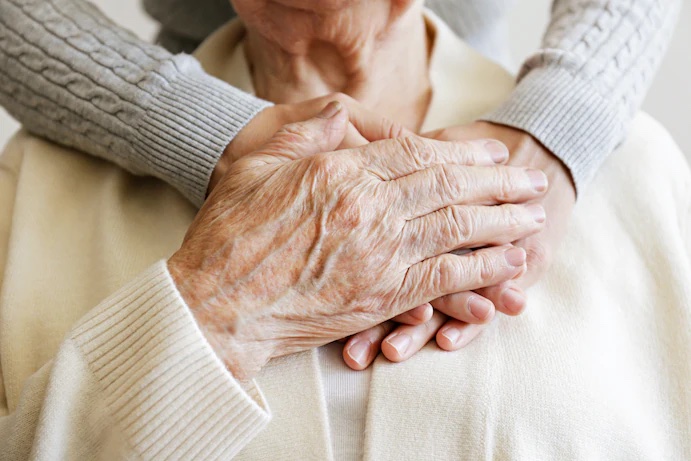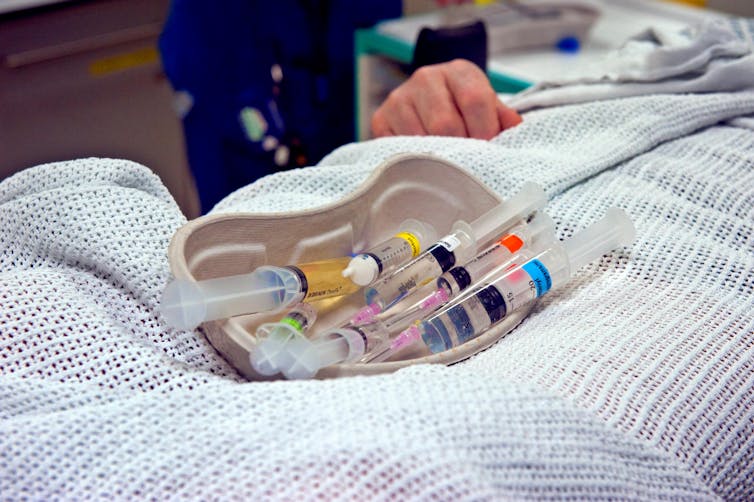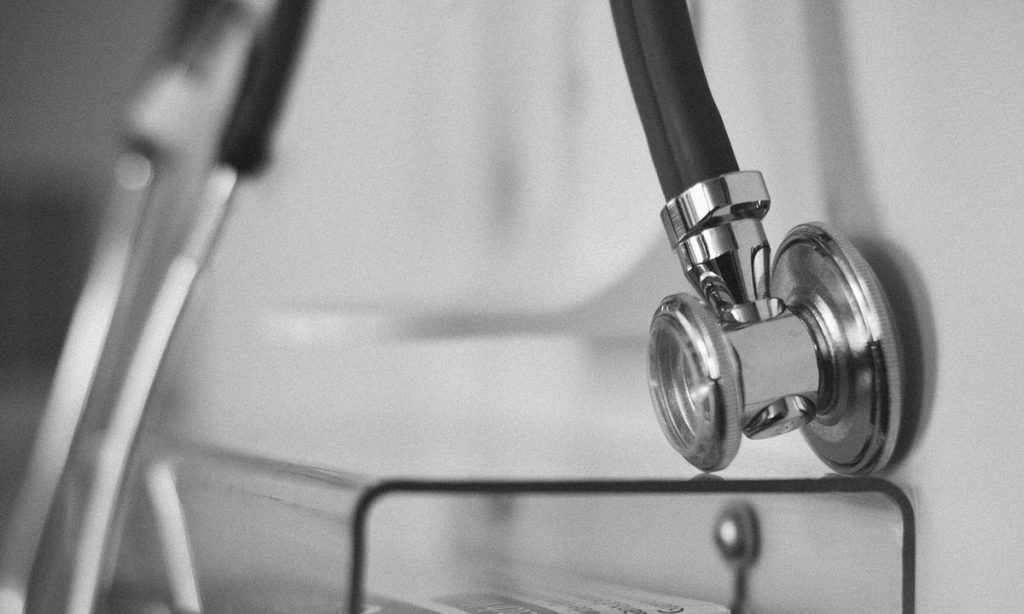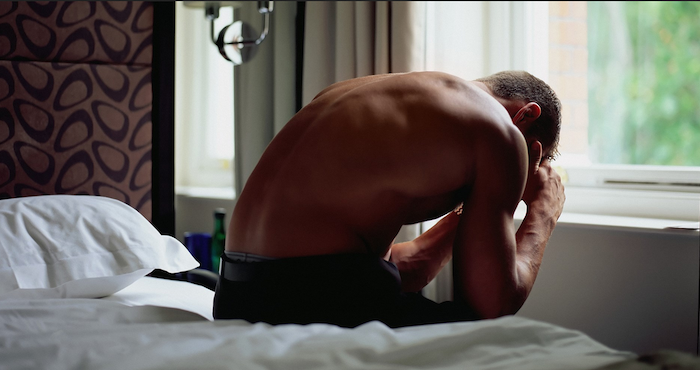— And Here’s What to Do About It

You’re not the only one who isn’t thriving right now—and that’s OK.
When someone asks you how you’re doing with genuine concern, you might be at a loss for how to articulate how you’re feeling lately. And it might be so hard to find the words because you’re not really feeling anything—or more specifically, you feel that your life has become sort of stagnant and directionless. In other words, you might be “languishing.”
Languishing can also be described as a “dulling of our emotions,” says Dion Metzger, M.D., a psychiatrist practicing in Atlanta. “It’s not sadness, but a lack of joy,” she says. “It’s a neutral feeling of emptiness.”
Even if you’re not familiar with the term, you may be familiar with the feeling—and you’re not alone. In fact, a 2021 survey on mental health found that around 20 percent of Americans are languishing, and this state of “blah” was found to be most common in millennials. So what exactly is languishing, how does it manifest, and how is it any different from, say, depression? We asked mental health experts for the key signs and helpful coping strategies for anyone who’s languishing.
What is languishing?
American sociologist and psychologist Corey Keyes, Ph.D. was the first to use the term languishing as a way to describe a person’s mental well-being. Much of his research has approached mental health as a continuum, with the idea that the absence of mental illness does not automatically translate into the presence of mental health. More specifically, on one end of the spectrum, Keyes would describe someone who is mentally healthy as “flourishing,” while someone with an absence of mental health would be “languishing.” In his seminal 2002 paper on the mental health continuum, Keyes notes that people who are languishing face a risk of a major depressive episode that is two times higher than those who are moderately mentally healthy, and almost six times greater than those who are flourishing.
“Languishing can feel like a gray cloud of ‘blah’ has settled over you,” says Carla Marie Manly, Ph.D., a clinical psychologist in Sonoma County, Calif., and author of Joy From Fear. And while languishing is often associated with depression, she explains that it “is often seen as a more temporary response to unremitting stress, disempowering experiences, and frustration.”
Languishing vs. Flourishing
In his work on the mental health continuum, Keyes indicated that, generally speaking, positive feelings and functioning in life indicate flourishing mental health. Languishing exists on the opposite end of the spectrum and refers to lower levels of positive feelings and lower functioning in life. As Dr. Metzger puts it, “languishing is joyless,” whereas a person who is “reaching [their] full potential of capturing life’s joy” is flourishing.
“Languishing involves a general ‘pulling back’ from life, and involves a decrease in positive feeling states,” Manly explains. “Flourishing, on the other hand, involves engaging with life in positive, healthy ways as well as enjoying positive mood states. That said, flourishing mental health does not mean that you are happy all the time or that your life is ‘perfect;’ flourishing involves facing life’s ups and downs with hope and resilience.”
The Signs of Languishing
Some of the most common markers of languishing are low motivation, difficulty concentrating, and poor energy, according to Dr. Metzger. It can also affect a person’s appetite and sleep. “Some experience reduced appetite, whereas others tend to overeat to self-soothe,” Manly adds. “Similarly, some experience poor or interrupted sleep, whereas others have hypersomnia (sleep more than usual).”
As Manly points out, languishing encompasses a wide range of experiences, including dysphoric mood states and an ongoing sense of ennui—both of which often result in reduced or no interest in interacting with others socially. Additional signs of languishing include a lack of focus, lack of purpose, disinterest in normally pleasurable activities, and inability to engage in necessary daily life tasks, or feeling “blue,” she adds.
The Key Difference Between Languishing and Depression
Because there’s some overlap in symptoms, at times it can be hard to differentiate between languishing and depression, but there are in fact some clear distinctions. Dr. Metzger likes to use a thermometer analogy. “Languishing is when we’re at zero degrees, neutral—not negative or positive. Depression is when the temperature goes into the negative numbers. These negatives include feelings of hopelessness. Languishing is a feeling of nothing, and depression is a feeling of sadness,” she explains.
And although languishing can involve or become clinical depression, not everyone who experiences languishing meets the criteria for depression, and vice versa. Clinical depression is a disorder outlined in The Diagnostic and Statistical Manual of Mental Disorders (DSM-5), whereas languishing is not. “In general mental health terms, depression would be viewed as a clinical diagnosis, whereas languishing might be viewed more as a failure to thrive,” Manly says.
A Lot of People Are Languishing Right Now
If it seems like you’ve been hearing a lot about languishing lately—specifically, over the past two years—it’s not your imagination. “The combination of the social isolation, grief, and fear of the pandemic has brought languishing back into the spotlight,” Dr. Metzger explains. “It’s how many people are responding to the uncertainty and emotional rollercoaster of the past 22 months.”
Along the same lines, Manly notes that languishing can result when ongoing stressors create deep weariness and mental burnout. “Far from being abnormal or ‘lazy,’ those who experience languishing behavior during the pandemic are actually displaying natural responses to the highly stressful, exhausting, and disempowering nature of the pandemic,” she says.
How to Get Through a Period of Languishing
1 Take small, actionable steps forward each day.
Create a list of top priorities—the most important needs—and focus on accomplishing just two or three of them per day. “This might be as simple as taking a 15-minute walk each day to get an exercise routine going, or something more involved, like drafting a new resume or tackling house-cleaning one room at a time,” Manly says.
2 Reward yourself for every positive step forward.
As you complete the small tasks on your list, Manly suggests offering yourself a feel-good reward, like watching 30 minutes of your favorite show in exchange for every 30 minutes of cleaning, focused work, or other accomplishment. “This type of reward system supports the positive, flourishing-oriented mindset that’s so essential for getting unstuck from languishing energy,” she says.
3 Reach out for positive, affirming assistance.
Find a support group or mental health provider. “Avoid the urge to hide your difficulties and challenges,” Manly says. “We all need support when life gets rough.”
4 Identify and incorporate joy into your life.
During periods where you’re feeling nothingness or emptiness, Dr. Metzger suggests consciously identifying what brings you joy, and then making an effort to incorporate it into your life on a regular basis. “Be very intentional in seeking joy,” she advises. “Write down what brings you joy and incorporate it into your weekly routine. It’s the only way to undo the languish by counteracting it with positive emotions.”
5 Connect with people you trust and love.
You may not consider spending time with lots of other people (or certain people) something that brings you true joy—but there’s no doubt that interacting with people in your life who bring you comfort or make you feel relaxed and at-ease can help. “Connect with others to enjoy little bright spots in life such as a movie, cup of coffee, or baking project,” Manly says. “Laughter and friendship can be very good antidotes.”
6 Acknowledge and validate your own experience.
Lastly, if you recognize that you are languishing—and perhaps have been for quite some time—be kind to yourself, and keep in mind that we’ve all been through a lot. “If you are suffering, don’t blame yourself or expect yourself to magically pop out of languishing,” Manly says. “The pandemic has taken a toll on our bodies, minds, and spirits—it’s natural to feel quite low after all that has occurred.” Acknowledging how you feel (or how you don’t feel) doesn’t signal that you’ve given up; awareness is actually a big first step toward making positive moves forward.
Complete Article ↪HERE↩!








